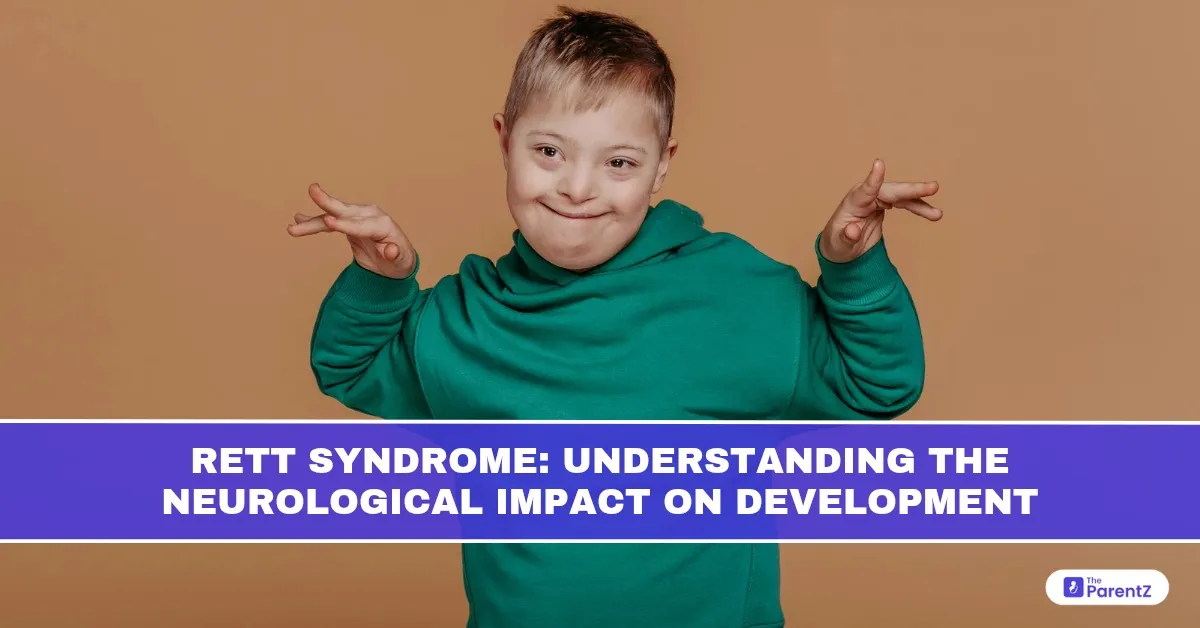Imagine your child begins developing normally, smiling, babbling, and achieving milestones like sitting and crawling on time. Then, seemingly out of nowhere, their progress slows and even reverses. They lose skills they once had, like the ability to speak, walk, or use their hands for basic tasks. This is the reality for many families with children diagnosed with Rett syndrome, a rare neurological disorder that primarily affects girls.
Rett syndrome is a condition that impacts the brain’s normal development, leading to severe physical and cognitive impairments. Although it’s relatively rare, understanding Rett syndrome is crucial for supporting children who are affected and for giving families the tools they need to navigate the challenges.
What is Rett Syndrome?
Rett syndrome is a genetic disorder that affects brain development and leads to a progressive loss of motor and cognitive skills. The condition is almost exclusively found in girls, as it is linked to mutations on the X chromosome. Boys who inherit the mutation typically don’t survive past infancy, making Rett syndrome a predominantly female condition.
The cause of Rett syndrome is a mutation in the MECP2 gene (methyl CpG binding protein 2), which is responsible for regulating the function of other genes. This gene mutation disrupts normal brain development, leading to the symptoms of Rett syndrome.
Stages of Rett Syndrome Development
Rett syndrome follows a distinct pattern of progression. The timeline and severity can vary between individuals, but the disorder generally follows these stages:
1. Normal Development (Birth to 6-18 months)
Most babies with Rett syndrome appear to develop normally in the first few months. They reach milestones like smiling, cooing, and making eye contact, showing early signs of social engagement and motor control.
2. Regression Phase (6-18 months to 3 years)
After a period of apparent normal development, children with Rett syndrome begin to lose the skills they previously gained. This period of regression is marked by a loss of purposeful hand movements (such as grasping or pointing), loss of speech, and delays in motor skills. Behavioral changes, including irritability and repetitive movements like hand-wringing, may also emerge.
3. Plateau Phase (3-5 years)
During this phase, the child’s development stabilizes. While they may not regain lost skills, the rate of deterioration slows. Children may still struggle with movement, communication, and social interaction, but their condition generally remains constant during this phase.
4. Advanced Stage (5 years and onward)
As children grow older, they may experience further physical complications, such as scoliosis (curved spine), problems with mobility, seizures, and difficulty swallowing. Cognitive and communication impairments continue to persist, and some children may lose the ability to walk. However, many individuals with Rett syndrome retain cognitive awareness and emotional responses, though they often lack the ability to express them in typical ways.
Symptoms of Rett Syndrome
Symptoms of Rett syndrome vary in severity and timing but can generally be grouped into physical, cognitive, and behavioral categories.
Physical Symptoms:
- Loss of purposeful hand movements: Initially, children may exhibit hand-wringing, clapping, or rubbing, which can become repetitive and uncontrolled.
- Movement difficulties: The child may have difficulty walking, and some may develop ataxia (lack of coordination).
- Slowed growth: Many children with Rett syndrome experience growth retardation and may be smaller than their peers.
- Breathing irregularities: Abnormal breathing patterns, including holding breath, rapid breathing, or hyperventilation, are common.
- Seizures: Many individuals with Rett syndrome experience seizures, which can be difficult to manage.
Cognitive Symptoms:
- Loss of speech: Children may lose their ability to speak or understand language.
- Severe developmental delay: The loss of social and communication skills can leave children significantly behind their peers.
- Cognitive impairments: Most children with Rett syndrome have intellectual disabilities, though their cognitive awareness can be preserved despite the inability to communicate effectively.
Behavioral Symptoms:
- Social withdrawal: Children may exhibit a lack of social engagement, though some may retain emotional bonds with caregivers.
- Repetitive behaviors: Hand-wringing, clapping, or rocking may become common, particularly in the regression stage.
- Mood instability: Many children show signs of irritability, anxiety, or frustration, particularly during developmental regression.
Diagnosis of Rett Syndrome
Rett syndrome is typically diagnosed based on a child’s developmental history and the progression of symptoms. Genetic testing to identify mutations in the MECP2 gene is the most reliable way to confirm the diagnosis. Because the symptoms of Rett syndrome can mimic other conditions, genetic testing is crucial for accurate diagnosis.
Differential Diagnosis:
Rett syndrome is sometimes confused with other conditions like autism, cerebral palsy, or intellectual disabilities. However, unlike these conditions, the regressive nature of Rett syndrome, where a child loses skills they previously gained, is a hallmark sign.
The Impact of Rett Syndrome on Families
Receiving a diagnosis of Rett syndrome can be emotionally overwhelming for parents and families. The condition’s progressive nature means that caregivers must continuously adapt to new challenges as their child’s needs change over time.
Families often face:
- Physical demands: Providing care for a child with Rett syndrome may require physical assistance with daily activities like feeding, dressing, and mobility.
- Emotional toll: The loss of developmental milestones can be devastating for both the child and the family, leading to feelings of grief, frustration, or isolation.
- Medical complexities: Children with Rett syndrome may require ongoing medical care, including physical therapy, speech therapy, and management of seizures or respiratory issues.
Support groups and networks can offer invaluable resources and emotional support. Connecting with other families who understand the challenges of Rett syndrome can make a big difference in maintaining resilience.
How to Support Children with Rett Syndrome
While there is no cure for Rett syndrome, there are several ways to help children manage the condition and improve their quality of life:
1. Early Intervention
Early intervention with physical, occupational, and speech therapy can help improve motor function, communication, and daily living skills.
2. Seizure Management
Many children with Rett syndrome experience seizures, which can often be controlled with medication. Working with a pediatric neurologist is crucial for finding the most effective treatment.
3. Adaptive Equipment
Adaptive devices like wheelchairs, communication boards, or feeding tools can make daily tasks more manageable and help children maintain independence.
4. Routine and Structure
Children with Rett syndrome often thrive in structured environments. Consistent routines and familiar caregivers can help provide stability and reduce anxiety.
5. Social and Emotional Support
While children with Rett syndrome may have difficulty with communication, it’s essential to maintain emotional connections. Be patient and offer comfort through physical touch, eye contact, and positive reinforcement.
Conclusion: A Life of Hope and Care
Rett syndrome is a challenging condition that profoundly impacts a child’s development, but it does not diminish the love, joy, and potential they bring into the world. With the right interventions and a supportive network, children with Rett syndrome can lead fulfilling lives.
By understanding the neurological impact of Rett syndrome, parents, caregivers, and healthcare providers can better support these children, ensuring they receive the care and attention they need to thrive. Every small step forward, no matter how difficult, is a victory on this long but meaningful journey.








Be the first one to comment on this story.